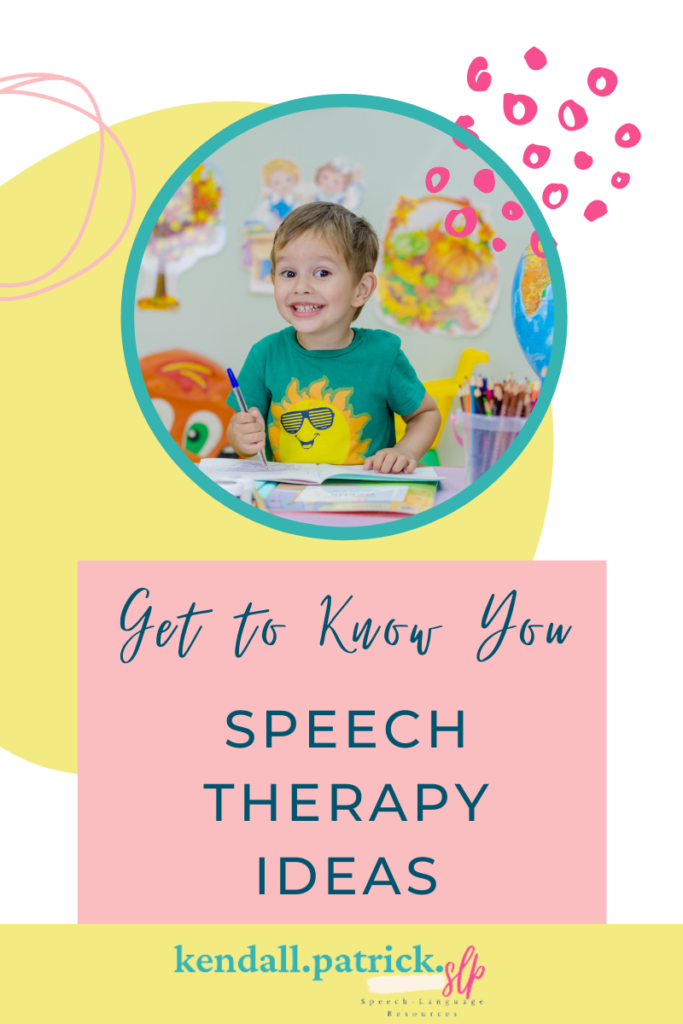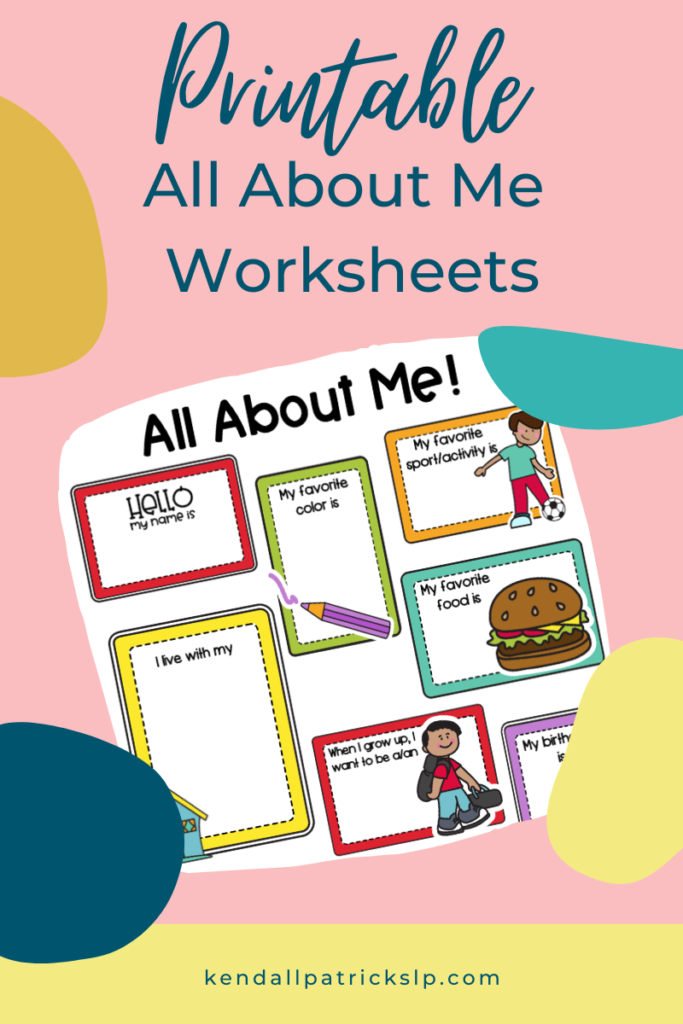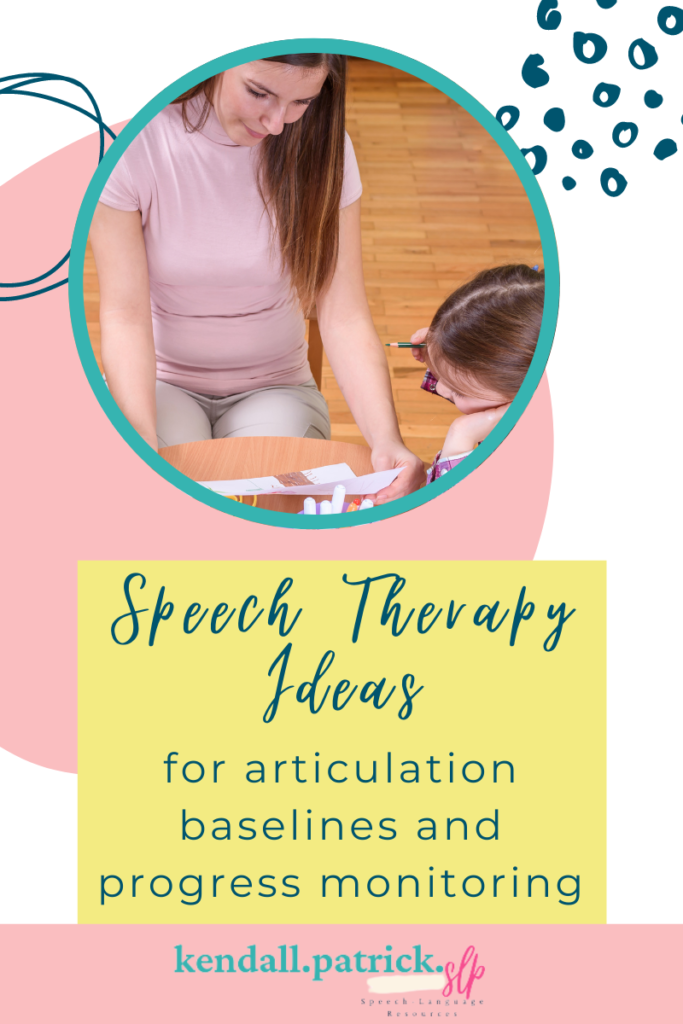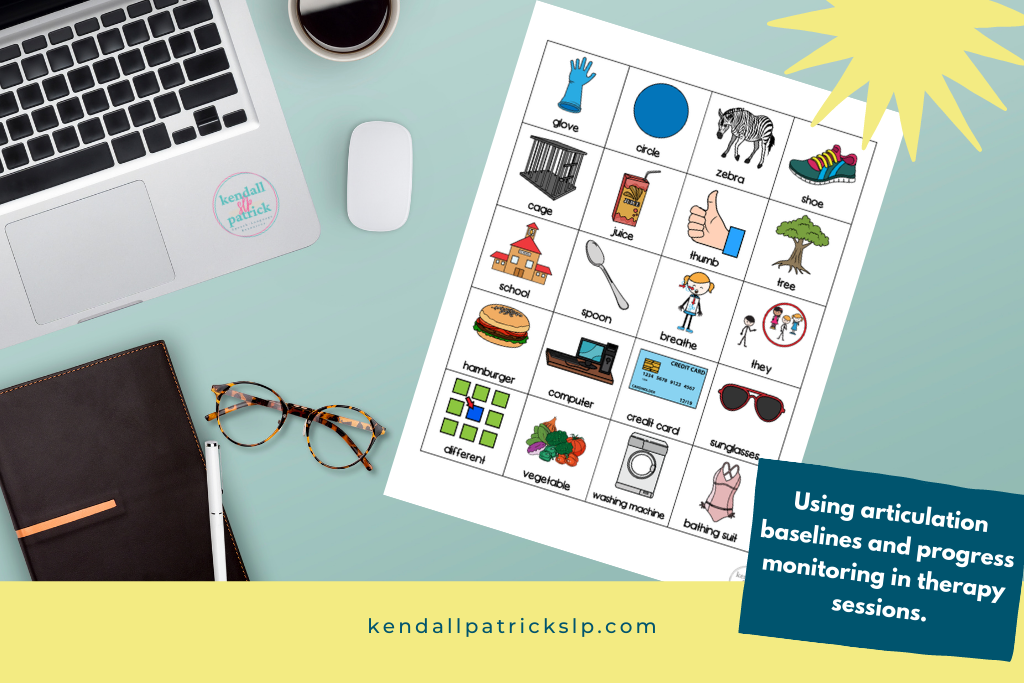I love planning new back to school speech therapy ideas! One of my favorite times of year is the beginning of a new school year. Anyone else?? I love shopping for new school supplies, redecorating, and organizing, and I can’t wait to get my caseload and start working on my schedule. Yes, I said it, I LOVE making a schedule. (More on that later). One of my favorite parts of the new year is planning for the first few days of therapy. I am always looking for new back to school speech therapy ideas. But I have a few tried and true back-to-school therapy ideas that are my favorite and my go-to’s.
For some of these favorites, freebies, and more, sign up with your email address here to get access to my free library (growing weekly) full of some of my goodies made exclusively for my followers.
Where to start when preparing for back to school speech therapy ideas and activities…
While I love the beginning of the year fun and craziness, it can also be a bit daunting when thinking of all the things you have to do and even the things you don’t know that you don’t know – that’s the worst! Well, that’s what I’m here for. Let me help you make this season a little less stressful and take at least one thing off of your plate – planning for back to school speech therapy sessions.
New to the field or the school setting? In a new school district this year? Or just needing a little inspiration to get you going? I am here for you! To learn more about me and my journey as a school SLP click here.
The two things I feel are most important when getting back into the swing of things are:
1) getting to know my students a bit better (both new and old kiddos) and 2) figuring out where they are related to their current goals and where we need to go next so I can PLAN, PLAN, PLAN!
I think it is so much fun to ease into therapy with some get to know you games and visuals so I can understand their personalities, likes/dislikes, and for some of my older kiddos – maybe what their goals for the year are. If they are determined to “graduate” before going on to middle school or finally master that pesky /r/ sound… Great! I need to know that. What a great conversation we can have from there about them taking ownership over their progress and effort. If I have a new Kinder who has made it clear he does not want to be there but let me know in our game that he LOVES Paw Patrol? Awesome! Target, here I come for ALL the Paw Patrol stickers, games, books, whatever you got! I will work it into therapy!
After a week or so of getting to know each other (or maybe getting acquainted), I move into gathering my baseline data. Sounds boring right?? NO! I love this part! While the kids may find it a bit of a snooze, I love the knowledge I gain from these tasks and the confidence in knowing where we are, and where we need to go.
Stay tuned for how I tackle both of these tasks!
Get to Know You Speech Therapy Ideas

Okay, confession time – I hate ice-breakers, like REALLY hate them. Anyone else? They stress me out. I don’t like being put on the spot. And I am not good at thinking in a pinch. Just not my thing. But I do like the idea behind them and after some trial and error have found some “ice-breakers” or as I prefer to call them, “get to know you activities” to get us going. These are some of my absolute favorite back to school speech therapy ideas.
Speech Therapy Ideas for Breaking the Ice – Beach Ball Toss
One of my favorite activities is super simple and cheap. All you need are 1) a beach ball 2) a sharpie. That’s it! Write a “wh” question (e.g., “What is your favorite color?” “What is your favorite food?” “Where would you go on vacation?” etc.) in each section of the ball.
To play, everyone stands in a circle. When holding the ball, you choose one person (and say their name so they know to expect the ball coming toward them) and yell a color on the ball. The person who catches it answers the question. Then continues the game by passing it to another person. Super simple activity. The kids feel it’s a game because they are throwing a ball. You get to know them better. Everyone gets practice with the names of other students in their group. Win-Win-Win.
Get to Know You Speech Therapy Worksheet {freebie available}
Next, I like to do a simple task, seated at my therapy table. While I like to incorporate a variety of styles and seating/movement options into my therapy sessions, I also really enjoy the calm, quiet of my horseshoe table. (I realized just how much I loved my table after a year of virtual learning and/or social distancing…). I also use this opportunity to discuss therapy rules, procedures, and expectations. It is important to start the year with clear rules and boundaries so that the students know what to expect and have a safe routine. During these discussions (along with discussions about our summers) I have them complete an All About Me page for me to keep in my folders.
This helps me get to know them even more and gives me a resource to keep all year and refer to as needed. This is especially helpful at IEP time so I can incorporate their interests, strengths, and goals. Plus it’s really fun to hear some of their answers!
Pictured below is what I use and you can click to download a free copy to use in your room!

Speech Therapy Back to School Welcome Letter
For my speech therapy back to school welcome letter, I like to just send a quick page (that I have the students help make) with important information to send home after the first week in therapy. I like to have the student help me complete this form as a reinforcer so they know their speech times. Then they hopefully remember to share it with their families as well. This short note has their speech days/times, their IEP due date, my name, and how to get in touch with me. I have a link to an editable google doc in my free resource library.
Gathering Baseline Data for Speech and Language Goals
Why is it important to gather baseline data in my back-to-school speech therapy sessions?
The American Speech-Language-Hearing Association (ASHA) describes baseline data as that which is “used to determine the quantitative level for the indicators of success and indicates how much change will occur if the desired outcome is achieved” (Dublinske, ASHA).
Basically, we need to know where our students are starting (in real numbers # correct / # of trials or %) so that we can track their growth to show strengths, weaknesses, and mastery of goals. The following back to school speech therapy ideas are probably some of the most important to include at the beginning of the year.
Language Baselines – Get the Most Bang for Your Buck!
One of the best ways to gather a variety of baseline data in a simple measure is to get a narrative retell sample. During the first couple weeks of my back to school speech therapy sessions, I spend one day getting narrative samples from all of my students identified with a language delay or disorder. What does this look like? You may ask… or Who’s got time for that?? It’s not as daunting a task as it seems, I promise!
This is what I do:
- Step 1: Choose a book with a clear complete episode (or multiple episodes). This includes a character, setting, initiating event/problem, feelings, action sequence, consequence, solution, and ending. (For speech therapy activities for older students, you can also look at higher-level components such as dialogue, embedded episodes, inferences, etc.).
- Step 2: Read this book to each of your groups for the day (without additional questioning, prompting, guiding – which is so hard, I know!) Let them know you will be asking them to tell you the same story at the end, so they need to listen closely.
- Step 3: After finishing the story, pull each student aside and ask them to tell the story back to you as well as they can. Do not prompt them, but encourage them to do their best while reminding them it is okay if they do not remember everything.
- Step 4: Write down everything they say – make sure to write it exactly as they have said it so you can mark grammar errors as needed.
- Step 5: Review responses and mark the components the student included, as well as the ones they have left out. Also, mark any grammatical errors and any transition words that they used.
And that’s it!
In one therapy session (with a little review time afterward) you have an overall picture of your student’s language content – vocabulary, sentence structure, and grammar. This should give you a place to start for the year in therapy based on the language components that were left out (e.g., character names, feeling words, correctly sequenced actions, etc.), weak or repetitive vocabulary, and a variety of sentence structure (e.g., correct grammar use, past tense verb use, pronoun use, transition words, complex structure, etc.) or lack thereof.
Another must in my early back-to-school speech therapy sessions is a vocabulary baseline measure. We all have loads of speech therapy vocabulary activities, I’m sure. But how well are we collecting data and measuring growth as we are teaching these vocabulary skills?
This is how I do it:
Baseline Measure: Ask the student to describe 3 items in a variety of categories (e.g., cat, banana, bus; lion, chair, airplane, etc.) and write their response. I mark their responses based on the variety of details they give (e.g., category, describing words, location, parts of a whole, composition, function) and score out of a possible 6 attributes.
Note: even if they name 7 parts, I give one point as it is just to mark that they included this type of attribute. This is based on the vocabulary hierarchy and how we develop language. I have found that typically, my students with a language delay often provide a function (and sometimes a part) or multiple words in these areas but no other attributes as they have not yet developed these skills.
This measure gives me an excellent place to start in therapy when focusing on vocabulary interventions. I address teaching the different attributes (e.g., category activities, work on adjectives) as well as how to include the variety of attributes as a whole. In my district, we all have access to an Expanding Expression Tool by Sara Smith (which I LOVE and use all the time) but you can use a variety of activities to address these skills. Side Note: If you ever have the opportunity to attend one of Sara’s presentations and/or purchase her kit, do it! She is amazing and has so many great ideas for therapy with the research to back it up.
I then use the same 3 words to progress monitor students in order to mark progress and update goals when needed.

Speech Therapy Ideas for Articulation Baselines and Progress Monitoring
I like to get some quick baselines for my kiddos with articulation goals as well. I used to use these long packets and gather multiple trials for every single sound, in every single position, at different levels (word, phrase, sentence, etc.). But the problem was, this took weeks to do, my kids were bored, and I felt like I was wasting valuable therapy time. So while I still feel it’s important to gather this information so I can use my therapy time more productively and efficiently, I now gather smaller samples and get just what I need without all the extra.
This is what it may look like:
Check to see if they can produce their target sounds in isolation. If no – stop there. That’s where we need to start in therapy. If yes for some, check-in syllables and words (with 3-5 targets maximum). I use an app on my phone for word lists (Word Vault – free version) but you can use any articulation decks, printed word lists, or apps you have.
This method allows me to move quickly through all targets for my students with a few sound errors.
For more severe delays and disorders:
Now, for my students with more severe articulation and/or phonological delays, that’s where it can get a little more tricky. If I were to try to go through every single sound error in every position, it would take forever. I also may not get great information about sound patterns and situations they may struggle/not struggle with. Not to mention how incredibly frustrating this can be for the child.
Then, I would use a quick articulation/phonological progress monitoring tool to get a snapshot of the child’s overall sound errors. (This also doubles as a screening tool when needed). It not only gives me a great place to start but also gives me a quick, visual, easy way to progress-monitor throughout the year and before IEP updates.

Here are some more back to school therapy ideas and some of my favorite resources from other SLPs:
TOP 7 REASONS WHY AN SLP IS IMPORTANT TO YOUR LITERACY PROGRAM
Seven Engaging Activities for Auditory Discrimination to Gain More Accurate Speech Production
3 Engaging and Fun Ways to Target Identifying Emotions in Speech Therapy
Back to School Speech and Language Activities from The Dabbling Speechie
Back to School Vocabulary Activities for Speech Therapy from Teaching Talking
To learn how to blog from an expert, click here!
Kayse Morris – 7 Helpful Tips on How to Blog Like a Boss
Don’t forget to sign up with your email address here to get access to my free library (growing weekly) full of some of my goodies made exclusively for my followers.
I hope you found some of these ideas helpful and can use one or more in your therapy room this upcoming school year. Please leave a comment or shoot me an email if you want to share some of your favorite back-to-school speech therapy ideas.




4 Responses
Hi, this is a comment.
To get started with moderating, editing, and deleting comments, please visit the Comments screen in the dashboard.
Commenter avatars come from Gravatar.